Your cart is currently empty!

Meal plan ideas: high-calorie food to renourish your child with anorexia
High calorie food for weight gain
If your child lost weight, anorexia and anxiety are likely to remain unless they are renourished and regain weight. So parents learn to be courageous and to feed high-calorie food for rapid weight gain. It's the hardest thing for our children. Which is why my resources offer practical and emotional help for parents, so you can support your child.
Perhaps you're sticking to carrot sticks and lean chicken so that at least your child is eating something. If so I'm guessing you're in the painful situation where they are remaining ill, and getting sicker. Eventually a hospital will have to step in and feed high calorie foods. So either way, calories, fats, carbs, and weight gain are non-optional.
All the macros: carbs, protein and fats
While you're increasing calories, make sure you're also serving the three food groups that are essential to health. Many of our children have become scared of fats or of carbohydrates. Even if you could give enough protein to increase their weight, they're likely to remain unwell if that's all they're getting.
A small footprint, rather than a huge plateful
Fats are especially useful as they provide calories in a small footprint. That can make the plate less scary. And given how easily our children get bloated, because their digestive system has slowed down, a smaller volume, with denser food, is an advantage.
Blend in the high-calorie ingredients (so they're less terrifying)
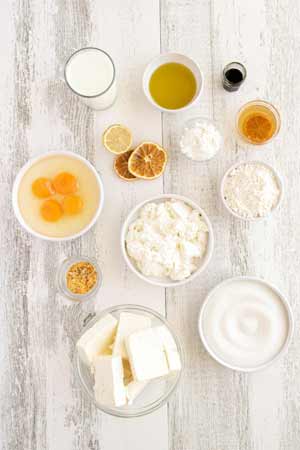
One day you'll help your child cope with the sight of oil drizzled on food, of a slab of cold butter on fresh bread, of whipped cream on a cake. See Chapter 9 of my book, or listen to my Bitesize audios, for help with exposure methods.
For now, I take it your priority is to make it possible for your child to eat for weight regain. Does your child's terror shoot up when they see a globule of oil that's separated from a sauce? Then you can help them manage by making sure everything is well emulsified and blended.
You can use oil, cream, cream cheese, nut butters, dairy butter and cheese to help with the fats and calories your child needs.
For an oil that doesn't impact the taste of your dish, the usual recommendation is rapeseed oil (canola oil in the US) or sunflower oil. I've found that the cold-pressed oils do have a flavour, so go for the more ordinary versions. These are sometimes labelled 'vegetable oil'. Another oil to check out is avocado oil: a parent tells me that with some brands, it's tasteless and transparent.
Note: Many parents rely heavily on coconut products (oil, cream, milk). Personally, if I was planning on using a huge amount of those, or of dairy butter, I'd ask for more advice, because of the high proportion of saturated fat. If I couldn't get reliable advice, I'd prioritise fats from nuts, seeds, olives — while taking care not demonise any foods taken in ordinary quantity. Having checked with eating disorder dietitian Therese Waterhous, here's a general tip: if a person has a family history of high cholesterol, it might be wise to favour mono and polyunsaturated fats.
To blend them in smoothly:
- you can use a blender
- someone told me they used lecithin to emulsify the fats
- I used a french cooking technique to prevent cream from showing up in streaks of blobs: boil down some double cream (heavy whipping cream) until it's down to just a couple of spoonfuls, and stir that into your pasta sauce, curry etc.
- Another technique to stop fats from floating on the top is similar to making a bechamel sauce: whisk the oil or melted butter into the same amount of flour or cornstarch. Then add that to your dish, and simmer for it to thicken.
- similar principle: someone told me they add a little flour when they cook with butter: when the food gets cold, this prevents fat from congealing and becoming (scarily) visible..
No diet versions of any food
An early rule we were given is that all foods must be their full version, not their diet version. In the UK most people use semi-skimmed milk, and we were given firm instructions to switch to full fat. Same with yoghurts. Full cream dairy is so much tastier that it's a habit we have kept.
Smoothies
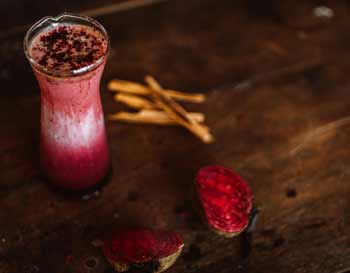
Smoothies / milkshakes are very popular, as you can blend in the ingredients your child needs. If it's hard for your child to chew their way through a lot of food, it's OK to give a more ordinary amount of food, and make up the rest with high-calorie smoothies.
Even if you start with a commercial smoothie, you can blend in your own ingredients. These can include ice cream, milk, yoghurt, double cream (heavy whipping cream), canola (rapeseed) oil, oatmeal, protein powder, nut butters, nuts, seeds, fruit, fruit juice, dried fruit and Benecalorie (see below).
When my daughter was ill it didn't occur to me to make high-calorie milkshakes, and no way would she manage a supplement drink (see below). But a good-size glass of full-fat milk worked well for us.
From the pharmacy and food lab
There are supplements that parents can blend into smoothies, breakfast cereals and so on. I'm told they are taste-free. Some of these are standard in eating disorder units, and are even part of nasogastric tube feeding.
Your clinical team may prescribe supplements like Fortisip or Ensure or Boost drinks. You may also find them online or at your pharmacy. Some youngsters like drinking these instead of enduring the guilt of chewing through big amounts of food.
Kate Farms (maybe only in the US?) does plant-based (vegan) drink supplements which a parent described as 'not as gritty as Ensure or Boost.
Benecalorie is a taste-free calorie and protein supplement which parents and professionals often add to food. See recipes from Nestle here, a clinician's post on it here and what parents say about it here. Benecalorie is not available where I am in the UK but if you look for it on Amazon you'll find some interesting suggestions.
Calogen is a paste that you can add to food.
Protein powders are popular, and indeed our children may see them as a good thing, courtesy of today's gym culture.
Maltodextrin is another supplement which I'm told is taste-free.
And some add Nido milk powder (Nestle) or Polycal (Nutricia) to dishes or drinks.
'We're not discussing ingredients'
Our children usually want to oversee our cooking, or at least to know the contents. My guess if that they hope that they can reduce their anxiety by knowing you've not put in 'too much' of what they fear. Or they're hoping that they can pressure you to put less in.
Most parents have observed that knowing ingredients, getting involved in the shopping and cooking, only increases anxiety. 'Do we have to lie about ingredients?' they ask. 'Without trust, we lose our power to help our child.'
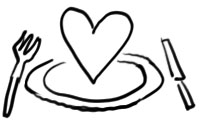
I agree, so the tip I want to give you is to very kindly refuse to discuss ingredients. Empathy first, then firmness. For example: 'Sweetheart, I'm guessing you're looking for reassurance when you ask me if there's oil in there. We've found that unfortunately it doesn't actually reassure you, remember? So I'm going to ask you to find something to do in another room while I'm in the kitchen, and we won't discuss ingredients. We know what to feed you, it's all safe and what you need. Would you go look for some fun YouTubes we can watch during dinner?'
Later, when calories and weight gain are not so crucial, you'll do exposure work so your child can be OK knowing ingredients.
How much? Portion sizes: eyeballing, or calculating calories
Our children have different metabolisms, so you'll only know how much food they need for weight gain by monitoring and adjusting. In some inpatient units, calories are increased by 300-400 calories every 3-4 days, until the person gets to the required rate of weight gain. At home, the usual recommendation is to aim for 0.5 to 1kg per week = 1 to 2 pounds per week.
Some parents like to work out calories, and those horrible dieting apps will help you do that. After a while, hopefully you'll have a repertoire and you can stop focusing so much on the detail. If you are weighing food or calculating calories, don't let your child get involved, because what is a tool for you is, for them, anorexia-reinforcing. As soon as possible, try to just eyeball quantities. Show your child confidence in your natural ability to feed them as required. Hopefully your treatment team is installing this confidence in you, and telling your child that they totally trust you to feed them.
Your child may be attached to packaged foods so that they have a known portion size. If possible, get in the habit early on of using home-made cooking, or of transferring yoghurts etc into various-sized bowls.
Nuggets or fingers or sausages can be a nuisance because your child could find it extra hard to cope with an 'extra' one or two if one day you need to increase quantities.
As a very rough guide, and so that you don't get into measuring and counting, serve more than what your child used to eat before the illness. Another rough guide is to feed at least as much as the hungriest adolescent boy in the family, or 1.5 to 2 times what the adults are eating. In case you hadn’t realised, adults’ needs are usually lower than an adolescent’s needs.
To help with an eyeballing approach, many parents have told me how much help they got from 'How to nourish your child through an eating disorder: A simple, plate by plate approach to rebuilding a healthy relationship with food' by Casey Crosbie and Wendy Sterling. The book is excellent in general, not just for plate sizes.

Do you need a meal plan, or just ideas?
Some treatment providers will give you a printed meal plan. Some parents say their child only eats because a clinician gave precise instructions. Ideally the meal plan will reflect the family's normal food and what your child used to like. And it will evolve with time: quantities need to be adjusted for weight gain. And the range of food will gradually broaden. I would expect any formal meal plan to get phased out over time.
There are also many treatment providers who, like our FBT therapist, don't believe in giving out a meal plan. We were told, 'You know how to feed your child.' Which is both true and not true. It's good to be empowered, to have the flexibility to try different things. But we parents can also worry about giving enough of the right things. So I hope this page helps you with ideas.
Fear foods? Pros and cons
With anorexia, it's normal if your child's range has become very narrow. When should you bring in all those 'fear foods'? My short answer is, as soon as possible, as long as it doesn't interfere with weight gain.
For example, today, instead of a boiled egg, you served fried egg. Your child was horrified by the oil, and threw the next few meals at the wall. It's possible that repeating the fried egg tomorrow (and getting at least some of it eaten) will work. I explain 'exposure' work in Chapter 9 of my book, and in many audios from my Bitesize collection. But if it's urgent to renourish your child, to arrest their decline and avoid a hospitalisation, personally I would stick to boiling their eggs. I'd make a note to return to fried eggs later.
But, you say, every food is a fear food right now. The only thing your child can eat without trembling is steamed chicken breast. They can't bear fats, or carbs. Foods they ate last week have become fearful. In that case, you have no choice but to expand their range. But it's OK, in my view, to wait for them to be more stable before you serve cheesecake.
For example, in our early refeeding days, our daughter could eat quiche without huge anxiety. That's got all the nutrients and calories that matter. If I recall correctly, we served quiche over and over again. Gaining weight got her out of danger, and in a better place mentally to cope with exposure to a wide range of foods.
I speak with parents whose child is proving to be able to expand their range of food right from the beginning. It doesn't interfere with the success of meals. If that's you, absolutely do it.
Vegetarian? Vegan?
See my page 'Is it OK for my child to be vegan during eating disorder treatment?'. This will help you work out if it's not OK, and if it is OK, there are ideas for weight-gaining vegan meals.
But how can I get someone with anorexia to eat ANYTHING?
This is a crucial question. Tons of help from me in my book and my Bitesize audio collection and my Essentials workshop. Or head over to my page 'How to get your child to eat: refeeding mealtime tips' for a quick start.
Recipes and high-calorie ingredients: from others
From FEAST: High calorie boosters lists the main foods suggested by dietitian Therese Waterhous in a video from the FEAST skills toolkit (paid content). If you live in the US, you'll recognise the products. She offers more meal guidance in the FEAST family guide, 'Getting started with refeeding'.
For parent-to-parent tips, there's a discussion thread on high calorie meals here and on high-calorie snacks here.
Read of dietitian Laura Cohen's shift in attitude as she nourished her child during anorexia treatment, in 'We only eat healthy foods in our house.
Mamaroo's YouTube channel for high-calorie recipes
Check with your treatment team
Obviously, any tips you hear from me or others, check with your treatment team. If you're on a waiting list, use your instincts, your knowledge of your child. If your child has been restricting severely, and you can't get eating disorder treatment yet (make a fuss), stay on the side of caution by increasing the food gradually, while getting a doctor to check for refeeding syndrome.
Would you like to see references to research papers and to guidelines from professional organisations on this topic? They are in my book's endnotes for Chapter 6.
I hope this page helps you build confidence, and I wish you great progress.
Onwards
These pages may be helpful to you:
* How to get your child to eat: refeeding mealtime tips *
* Is your school supporting lunch? For pupils with an eating disorder, it must. *
Last updated on:


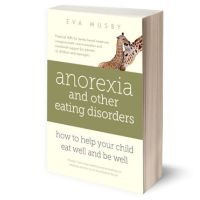

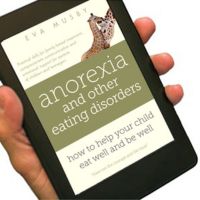

LEAVE A COMMENT (parents, use a nickname)